If you’re a Pennsylvania gardener looking to plant your own tomatoes this season, you might be wondering just when is the best time for planting. Knowing when and how to grow tomatoes successfully in the state can make or break your harvest!
Whether you’re an experienced green thumb or a beginner farmer, understanding a few simple peculiarities of tomato planting in Pennsylvania can help ensure that your hard work pays off with ripe, delicious fruits come summertime. Read on to learn the ins and outs of tomato growing in the Keystone State—from timing concerns related to climate trends to information about soil conditions and more.
Pennsylvania Climate: Is It Worth Growing Vegetables Here?
Pennsylvania is renowned for its diverse climate, making it an ideal place to grow vegetables. People experience four distinct seasons throughout the year with temperatures ranging from mild in the summer and cold in the winter. The geography of Pennsylvania also gives a variety of microclimates across different regions that can be beneficial for a wide range of crops.
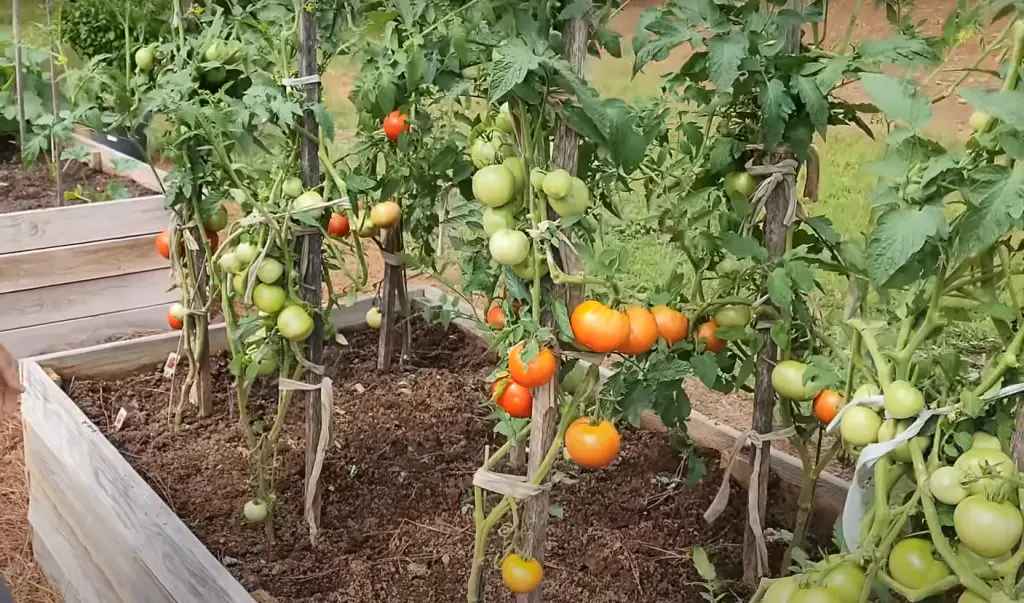
In terms of precipitation, Pennsylvania gets an average amount per year with most areas receiving between 30-50 inches annually. This makes it possible to grow vegetables during all times of the year, as long as there is proper preparation and irrigation when necessary. [1]
Springtime in Pennsylvania brings warmer temperatures that are perfect for planting early season vegetables such as peas, spinach, radishes and onions. During the summer, temperatures can get quite hot, so it’s best to select vegetables that thrive in warmer climates such as tomatoes, peppers and squash. [2]
In fall and winter months, many cool-season vegetables are able to be grown in Pennsylvania’s climate. Garlic, kale, cabbage and collard greens are all popular choices for these times of year. Planting in the late summer or early fall gives these crops enough time to establish themselves before the cold sets in.
Overall, Pennsylvania is a great place to grow your own vegetables due to its wide array of microclimates across different regions. With careful planning and preparation you can successfully grow fresh produce throughout most of the year. [3]
What Conditions Do Tomatoes Need to Grow Effectively?
Tomatoes need adequate moisture, warm temperatures, and plenty of sunlight to thrive. They require consistently moist soil that is well-drained. Tomatoes should be planted in soil with a pH between 6.2–6.8 for optimal growth and fruit production. Amending the soil with organic matter such as compost or aged manure will help to improve its structure and fertility.
Tomatoes also need at least 6 hours of full sun exposure daily. More sun is better, but too much can cause the leaves to burn.
Tomatoes also need to be mulched. Mulching helps the soil retain moisture and improves its structure, as well as suppressing weeds that can compete with tomatoes for nutrients. In addition, it’s important to provide adequate support for the tomato plants — either in the form of stakes or cages — so that the plants don’t become weighed down by their own fruit production. Lastly, applying fertilizer according to package instructions throughout the growing season will help ensure healthy growth and abundant harvests. With these conditions met, your tomatoes will be sure to thrive. [4]
Tomatoes To Grow In Pennsylvania
Big Beef
Big Beef is an indeterminate variety that produces large, bright red tomatoes with a balanced flavor that’s great for salads and sandwiches.
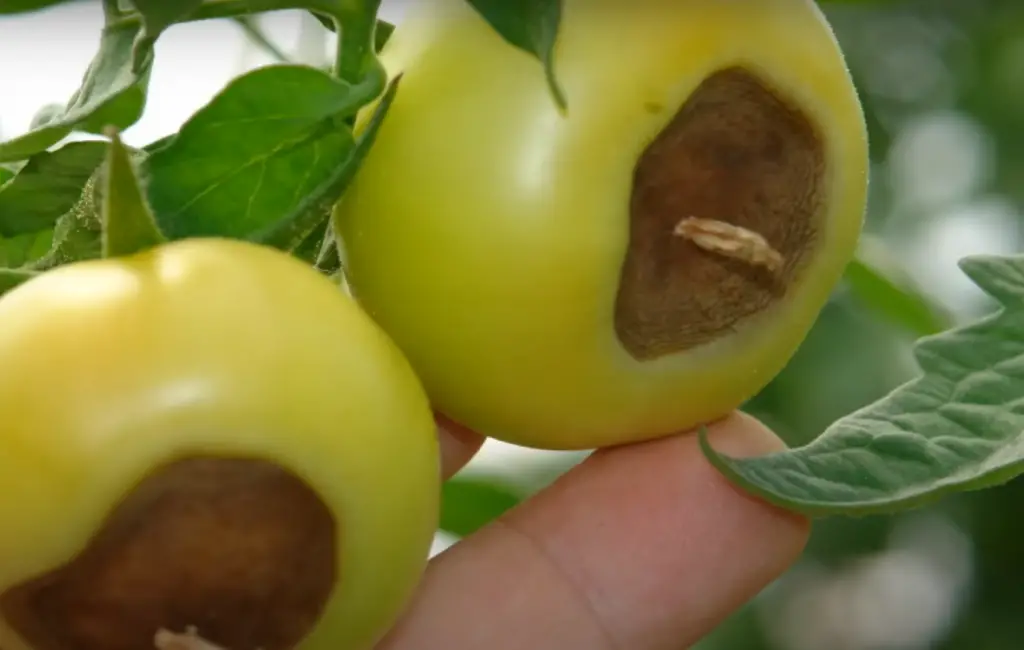
It tolerates heat well and is disease-resistant, making it a great choice for Pennsylvania gardeners.
Brandywine
This heirloom tomato has been around since the 1800s and is still popular today thanks to its sweet, tangy flavor and meaty texture. It takes a bit longer to ripen than other varieties but the wait will be worth it!
Mountain Merit
This hybrid variety is known for its high yields of medium-sized, sweet tomatoes with few seeds and thin skins. They are perfect for slicing fresh, adding to salads, or canning. Mountain Merit is resistant to common diseases and pests and is easy to grow in Pennsylvania gardens.
Juliet
These small, round tomatoes are perfect for stuffing with feta cheese and herbs or adding to salads. Juliet tomatoes have a sweet flavor and thin skin so they don’t need peeling before use.
Early Girl
If you’re looking for an early-season tomato variety that produces big yields of delicious fruit, Early Girl should be at the top of your list! This hybrid has good disease resistance and is cold tolerant so it won’t be affected by spring frosts in Pennsylvania gardens.
Sunbright
This cherry tomato variety produces lots of sweet, tangy fruit with bright yellow skins that are perfect for snacking on or adding to salads. Sunbright tomatoes have a high resistance to disease and can be grown in containers or raised beds.
Sweet Million
If you’re looking for an heirloom variety that produces lots of delicious red cherry tomatoes, try Sweet Million.
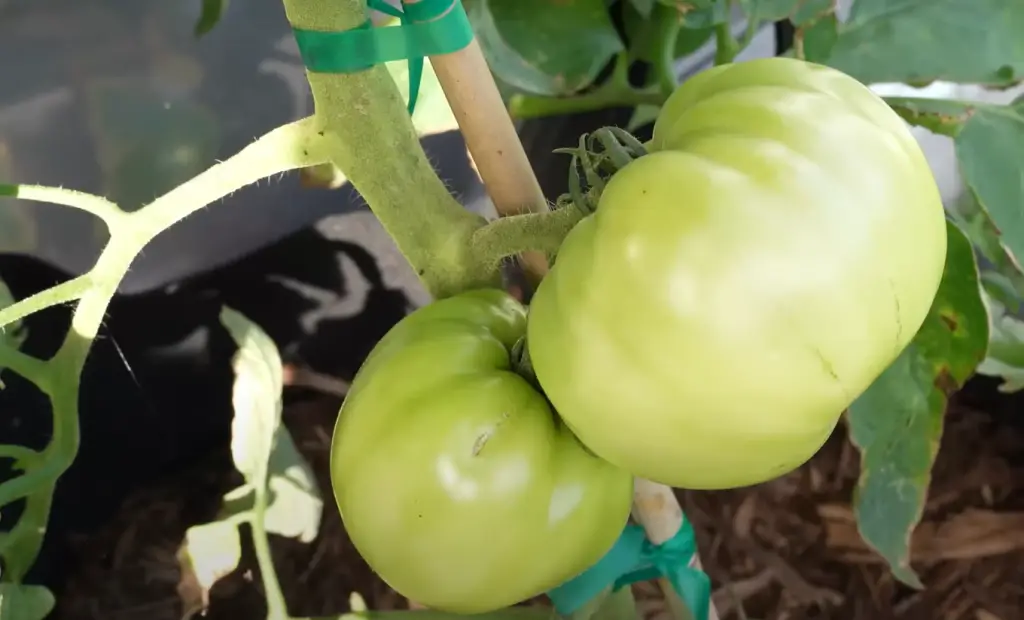
This plant is easy to grow from seed and will produce loads of sweet tomatoes throughout the summer months. It’s also resistant to common diseases in Pennsylvania gardens.
SuperSteak
This tomato hybrid has been bred specifically for gardeners who want big yields of large, juicy fruit with few seeds and great flavor. SuperSteaks have good disease resistance and take just a few weeks to reach maturity.
San Marzano
This heirloom variety is known for its deep red, sweet-tasting tomatoes that are perfect for making sauces or canning. San Marzano plants are indeterminate and should be staked or caged in Pennsylvania gardens.
Crimson Cushion
This hybrid cherry tomato has an unusual color and flavor that make it stand out from the rest! The small, round tomatoes have a bright yellow skin with dark pink stripes when ripe, and a sweet, almost tropical flavor. They also have good disease resistance and can tolerate cold weather better than other varieties. [5]
What Are The Considerable Factors For Planting Tomatoes In Pennsylvania?
When planting tomatoes in Pennsylvania, several factors should be taken into consideration:
- Climate: Pennsylvania has both warm and cold climates, so select a variety of tomato that will thrive in your area. Also, choose a spot for the plants that receive at least 6 hours of direct sunlight each day.
- Soil Type: Tomatoes prefer well-drained soil with lots of organic matter such as compost or manure mixed in. Test the pH of the soil and adjust if necessary to maintain an optimal range between 6.0 and 7.0 for best results.
- Watering: Tomato plants need constant watering (about one inch per week). Check the soil frequently to make sure it’s not too dry or soggy.
- Fertilizer: Use a balanced fertilizer such as 10-10-10 to provide your plants with the nutrients they need for healthy growth and good yields. This scheme means it contains 10 percent nitrogen, 10 percent phosphorus, and 10 percent potassium. Apply fertilizer every two weeks during the growing season.
- Pest Control: Since tomatoes can be prone to pests such as aphids and tomato hornworms, use natural methods such as insecticidal soaps or organic pesticides to control the problem.
- Support: Provide tomato plants with support such as stakes, cages, or trellises to ensure that the fruits have proper airflow and are less prone to rot or disease.
- Harvesting: Tomatoes should be harvested when they are fully ripe and still on the vine for best flavor. Be sure to pick all ripe fruit before the first frost in order to maximize your harvest. [6]
When Should Tomato Seeds Be Planted In PA?
Tomato seeds should be planted in Pennsylvania at the end of April or beginning of May, when temperatures consistently reach about 70 degrees Fahrenheit.
This will give them a jump-start on growing and ensure that they have plenty of time to produce ripe tomatoes by mid-summer.
Be sure to properly acclimate your seedlings to outdoor conditions before transplanting them into the garden – this is known as hardening off and can help prevent shock from sudden environmental changes. Proper spacing and plant care are also important for successful tomato yields – be sure to provide adequate sunlight, water, and nutrients throughout the season for optimal growth. [7]
What If Tomatoes Are Not Planted on Time In PA?
If tomatoes are not planted on time in Pennsylvania, it can result in lower yields and smaller fruit size. This is because the optimal temperature for tomato plants to thrive is between 65-85°F, and if temperatures rise above this range, the plant will start to suffer from heat stress. This can lead to wilting of leaves, stunted growth and reduced fruit production.
Additionally, late planting may cause problems with pest infestations as the plants will not have had enough time to develop vigorous defenses against them. These pests can further damage the crop and reduce yields even more.
To avoid these issues, it is best to plan ahead and ensure that your tomato plants are planted early so they have plenty of time to mature before summer temperatures take hold. If temperatures begin to rise before tomatoes have been planted, it is important to provide extra shade and water for the plants in order to reduce heat stress and keep them healthy. With proper planning and care, you can ensure that your tomato harvest will be abundant despite the late planting.
What Diseases Can Affect Tomatoes in Pennsylvania?
Tomatoes are a popular crop in Pennsylvania, but there are several diseases that can cause significant damage to tomato plants.
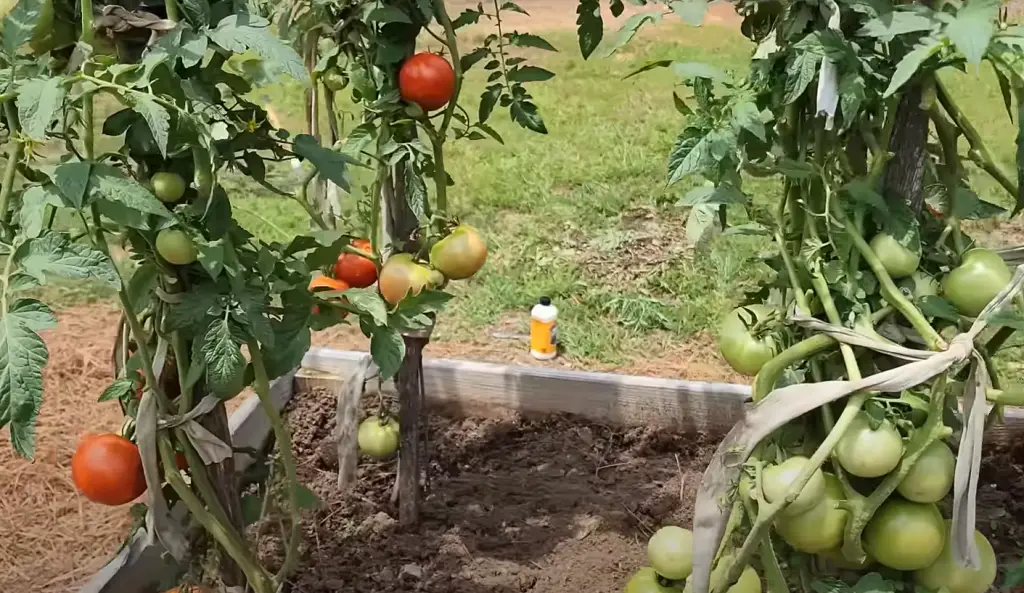
Some of the most common tomato diseases in Pennsylvania include:
- Bacterial Speck – This disease is caused by the pathogen Pseudomonas syringae and results in dark spots on the leaves, stems, and fruits of the plant. These spots eventually increase in size and may turn yellow or brown as they dry out. The bacteria can be spread through contaminated seed or transplants, wind-driven rain, direct contact with other infected plants, or tools used for pruning.
- Early Blight – Caused by Alternaria solani, this fungal disease is characterized by circular lesions on the tomato leaves that later turn necrotic and fall off. The spots can also spread to the stems and fruits of the plant, causing them to rot. This disease is usually spread through overhead irrigation, wind-driven rain, or by splashing water from infected soil onto healthy plants.
- Late Blight – Also caused by a fungus (Phytophthora infestans), late blight produces dark green lesions on the leaves that eventually become brown and dry out. This type of blight can spread rapidly in wet weather conditions and infect entire crops in a matter of days if left untreated. Infected fruit will have black spore masses underneath, making them unmarketable and even dangerous to consume.
- Tomato Spotted Wilt – This virus is spread by thrips, tiny insects that feed on the underside of tomato leaves and spread the disease as they move from infected to healthy plants. Symptoms include yellow spots or rings on leaves and stunted growth in plants. Tomato spotted wilt can be difficult to control since it’s spread by an insect vector, but cultural practices such as removing weeds and debris around the garden can help reduce its prevalence. [8]
FAQs
How late can you plant tomatoes in Pennsylvania?
In Pennsylvania, you can plant tomatoes as late as the end of July. However, early planting is recommended if you want to get the most out of your tomato crop. Tomatoes planted in May or June tend to produce a larger yield than those planted later in the season. Additionally, some varieties of tomatoes do better with slightly earlier planting times than others. It’s best to check with a local gardening expert for advice on when and which variety of tomato to plant in your area.
When should I plant my garden in PA?
The best time to plant a garden in PA depends on the type of plants you are looking to grow. Most of the state falls under Zones 5b and 6a, meaning that planting can be done as early as March or April. However, for tender annuals and vegetables like tomatoes, peppers, squash, and cucumbers, wait until late May when there is less risk of frost. For perennials such as trees and shrubs, fall may be a better time for planting since it gives them more time to become established before winter arrives.
When can I plant vegetables in Pennsylvania?
Vegetables may be planted in Pennsylvania any time between the last frost date in spring and the first frost date in fall. Generally, the best time to plant vegetables is after all danger of frost has passed, which usually occurs around late April or early May. Planting too soon can result in seedlings being killed by frosts and cold weather. It is also important to pay attention to regional variations when it comes to average last and first frost dates since they can vary significantly from one area of the state to another. Additionally, different types of vegetables have different recommended planting times, so be sure to check a trusted source for specific information on your desired vegetable plants.
What vegetables are good to grow in Pennsylvania?
Pennsylvania has a wide variety of climates, so there are many vegetables that can be successfully grown in the state.
Hardier vegetables such as cabbage and Brussels sprouts can be harvested in the winter months. Root crops such as potatoes and onions are easy to grow too. For those looking for something different to plant in their garden each year, try growing heirloom varieties of beans or peas.Useful Video:When to Plant Tomatoes in Pennsylvania?
Conclusion
Planting tomatoes in Pennsylvania is an enjoyable and relatively easy task, as long as you are mindful of their specific needs. With the right care and conditions you can achieve a lush and bountiful crop, regardless of your experience or skill level. As with any venture gardening, that begins with proper planning, making sure you have all necessary provisions in order before beginning your project. Secondly, Pennsylvania’s unique climate presents some fascinating cultivation possibilities that can help make your gardening endeavors even more enjoyable. Additionally, growing tomatoes doesn’t have to be time-consuming or stressful; there are plenty of accessible tricks and techniques available that make the process smoother and more efficient for busy gardeners. All in all, despite the challenges presented by cold winters and early frosts, growing tomatoes in Pennsylvania is a rewarding journey that yields delicious results!
References:
- https://www.worlddata.info/america/usa/climate-pennsylvania.php
- https://gardenguide4all.com/organic-gardening-in-pennsylvania-the-best-fruits-and-vegetables-to-grow/
- https://www.marketsatshrewsbury.com/blog/vegetables-in-season-right-now-pa/
- https://www.rhs.org.uk/vegetables/tomatoes/grow-your-own
- https://thegardeningdad.com/best-tomatoes-to-grow-in-pennsylvania/
- https://garden-basics.com/when-to-plant-tomatoes-in-pa/
- https://gardeninghood.com/when-to-plant-tomatoes-in-pennsylvania/
- https://extension.psu.edu/tomato-diseases-and-disorders-in-the-home-garden





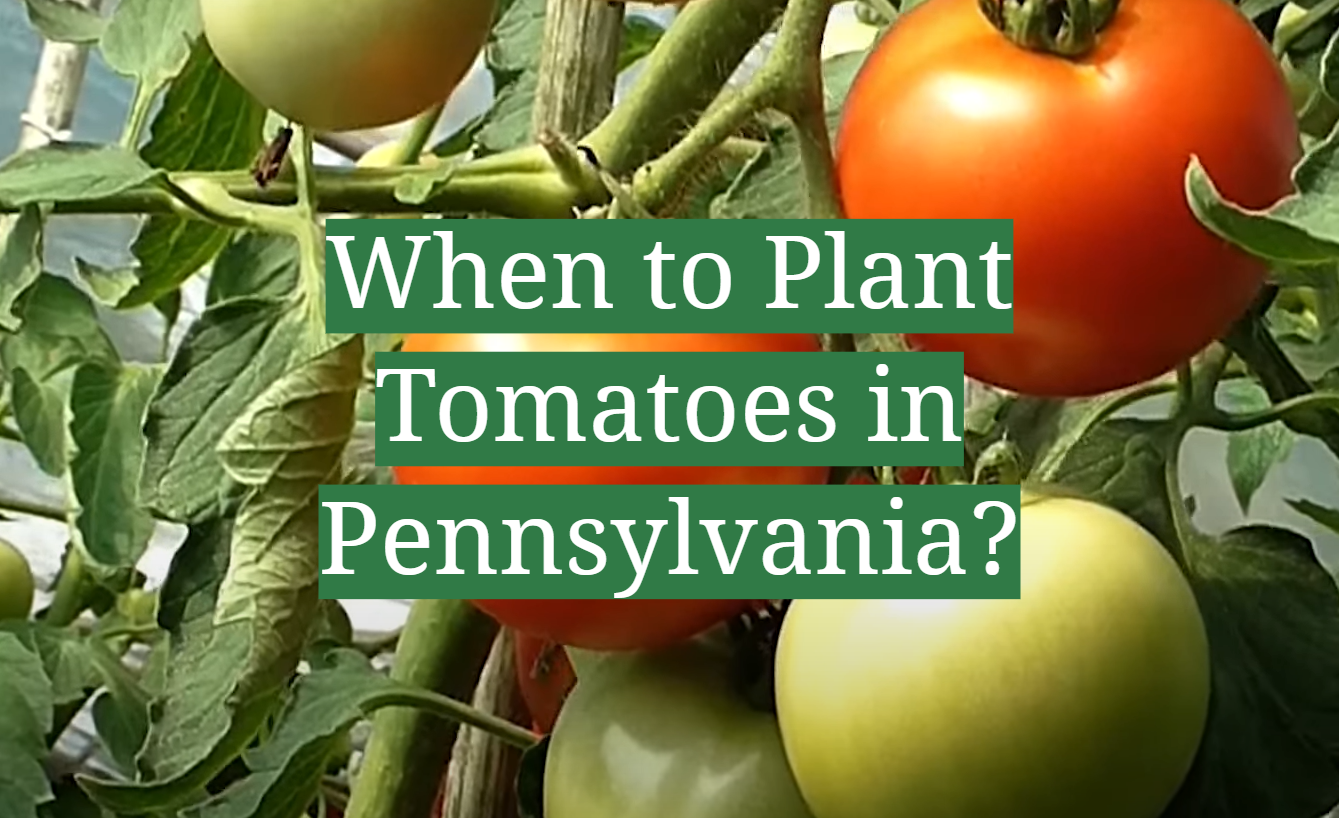




Leave a Reply
View Comments